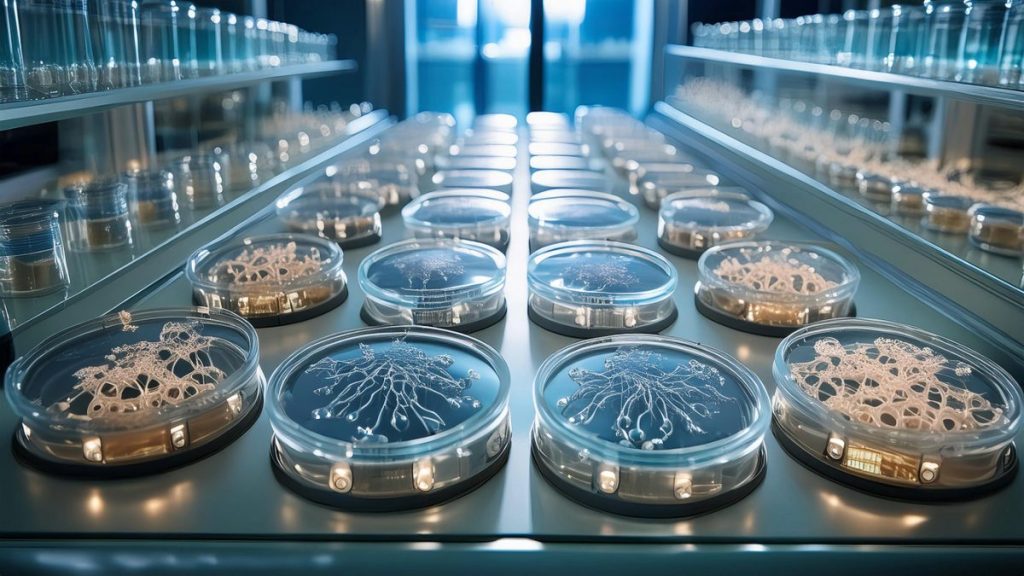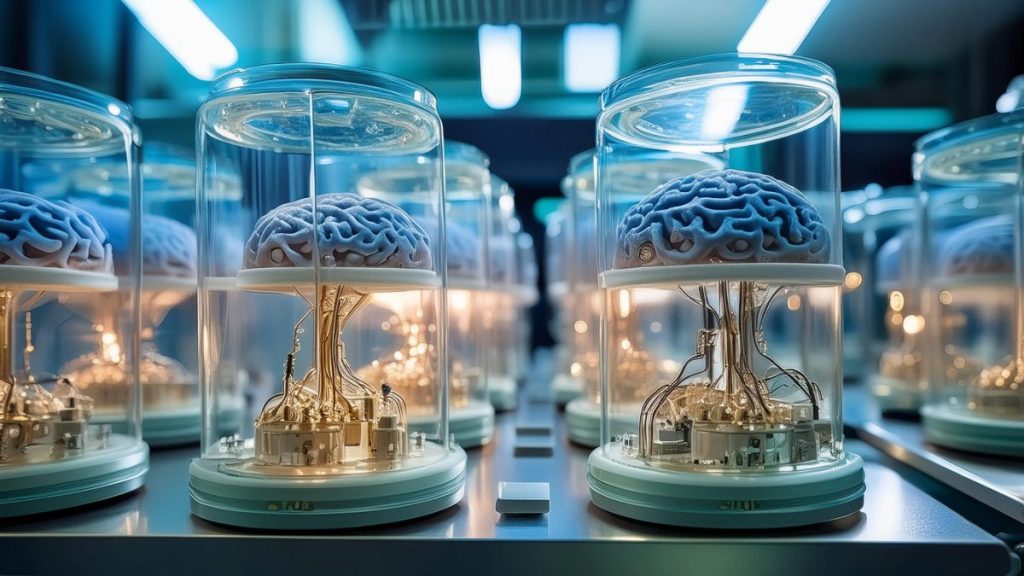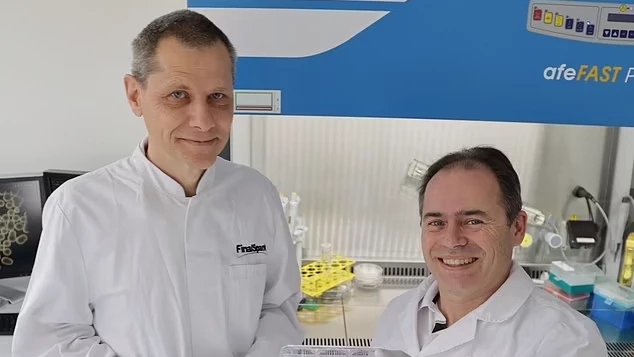The faintly morbidly named FinalSpark has recently unveiled the Neuroplatform, the system touted as the world’s first ‘living computer’, which represents a remarkable and slightly uncomfortable intersection of biology and technology.
With great innovation comes great responsibility and ethical considerations and some echoing dystopian narratives, might say is reminiscent of popular sci-fi movie The Matrix. The Neuroplatform system uses 16 lab-grown brain organoids to perform computational tasks, promising significant advancements in energy efficiency and computing capabilities. However, while the potential of such a biocomputer is impressive, several critical aspects warrant a closer examination.
FinalSpark’s Neuroplatform uses 16 lab-grown brain organoids to perform computational tasks.
Revolutionary Yet Controversial
The concept of using lab-grown brain organoids for computation is undoubtedly groundbreaking. These organoids, derived from neural stem cells, are maintained in a specialized environment and connected to electrodes to process data. The resulting system is claimed to consume a million times less power than traditional silicon-based processors, which positions it as a highly energy-efficient alternative in an era of growing environmental concerns.
FinalSpark’s Neuroplatform integrates hardware, software, and biological components using Multi-Electrode Arrays (MEAs) to process data. These brain organoids, no larger than a speck, have a lifespan of up to 100 days, a significant improvement in the field of biocomputing. For a subscription fee of $500 per user per month, researchers can now access this pioneering technology, paving the way for the creation of the world’s first living processor.
Dr. Fred Jordan and Dr. Martin Kutter, the visionary minds behind this innovation, have previously made significant strides in the fields of anti-fraud systems and AI-powered biotech solutions. Their latest venture, Neuroplatform, is a testament to their relentless pursuit of pushing the boundaries of what is possible.
Yet, despite these promising figures, practical implementation and scalability issues remain. The lifespan of these organoids, currently around 100 days, limits their long-term usability. Unlike traditional hardware, which can operate continuously for years, these biological components require regular replacement and potentially complex maintenance.
The energy efficiency gains might be offset by the power needed to sustain the biological conditions, including refrigeration and nutrient supply, raising questions about the net energy savings.
Unleashing Evolutionary Potential?

Biocomputing, as epitomized by Neuroplatform, is not merely an advancement but a true evolution. Unlike traditional AI, which is confined to specific tasks, wetware-based AI can self-organize and continuously learn, offering a revolutionary approach to problem-solving. This collective intelligence can adapt and evolve, potentially surpassing the capabilities of conventional silicon-based systems.
One of the most astounding benefits of biocomputing is its unparalleled energy efficiency. Human brains, with their 86 billion neurons, operate on just 20 watts of power. In stark contrast, a silicon-based brain of equivalent complexity would require the energy output of two large power stations. Neuroplatform, therefore, represents a quantum leap in energy-efficient computing, reducing the carbon footprint of data processing by several orders of magnitude.
Silicon-based CPUs and GPUs are bound by physical limitations, but biocomputers can naturally grow and scale. This inherent scalability means that as the demand for computational power increases, biocomputers can expand seamlessly, providing a sustainable solution to the ever-growing data processing needs.
Ethical and Technical Challenges

Ethically, the use of human brain tissue in computing raises significant concerns. The very idea of ‘mini-brains’ performing computations evokes comparisons to science fiction scenarios, reminiscent of “Frankenstein’s monster”. These ethical considerations extend to the treatment and use of human-derived tissues, the potential for consciousness in advanced organoids, and the moral implications of creating and discarding living tissues for computational purposes.
Technically, the capabilities of these biocomputers are still nascent. While they might outperform silicon-based systems in specific applications, such as pattern recognition and adaptive learning, they fall short in raw computational power.
Current silicon processors execute billions of calculations per second, a feat that organoids cannot match given their biological limitations. Moreover, the reliability and consistency of biocomputers are unproven compared to well-established digital systems, which could limit their adoption for critical applications.
Potential Applications and Future Prospects
Despite these challenges, the Neuroplatform opens exciting avenues for research and specialized applications. It provides a unique tool for studying neural networks and brain-machine interfaces, potentially accelerating advancements in artificial intelligence and neurological research. For instance, the platform could facilitate experiments on neurotoxicity or the effects of drugs on brain tissues, contributing valuable insights to medical science.
Furthermore, as the technology matures, it might find niche applications where its adaptive learning capabilities and low power consumption offer distinct advantages. However, scaling this technology to replace or supplement conventional computing on a broader scale remains a distant goal, fraught with both technical hurdles and ethical dilemmas.
Yet, as we forge ahead, we must remain vigilant about the ethical implications. The line between innovation and exploitation is thin, and the potential for a dystopian future, akin to The Matrix, is real. Ensuring that biocomputing developments are guided by ethical considerations and robust regulations will be crucial in harnessing this technology for the greater good.
Biocomputing

FinalSpark’s Neuroplatform represents a pioneering step in the field of biocomputing, merging biology with technology in unprecedented ways. While the potential benefits in terms of energy efficiency and advanced computational capabilities are significant, the current limitations and ethical issues pose substantial challenges.
As with any emerging technology, it will require rigorous testing, ethical scrutiny, and iterative development to fully realize its potential and integrate it responsibly into our technological landscape.
Author Profile

- Lucy Walker covers finance, health and beauty since 2014. She has been writing for various online publications.
Latest entries
- June 30, 2025NewsWireBank Savings at Risk: The Dark Side of EU’s Savings Standard
- April 25, 2025Global EconomicsWhistleblowers Unmask Schwab’s Toxic WEF Secrets
- April 9, 2025Global EconomicsTariff Tensions Drive Market Volatility
- March 18, 2025Global EconomicsRed in Name Only: Labour’s War on the UK Working Class





